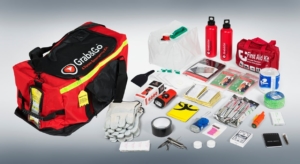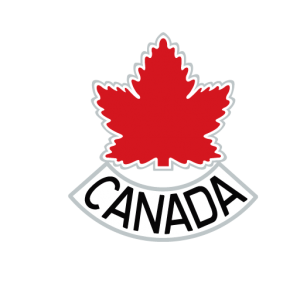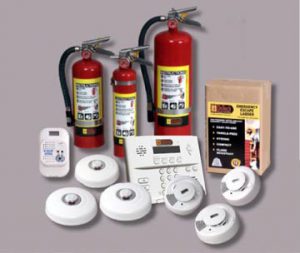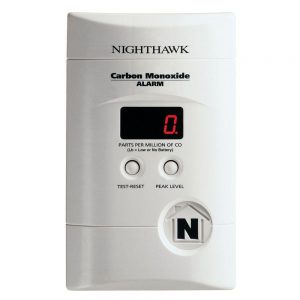Emergency Preparedness

School & Fire Department resources
Fire Prevention Week provides an excellent opportunity for fire departments to promote fire prevention and life safety in B.C. communities. Use this year’s theme of Not every hero wears a cape. Plan and Practice your EscapeTM to focus your activities,or use any relevant fire or life safety topic to engage your community. Download the Fire Prevention Week Activities Implementation Guide below for tips and ideas. Be sure to also explore the NFPA’s website for a whole host of excellent resources.
Fire Prevention Week provides an ideal opportunity to educate the public about the importance of fire and life safety. Download the template news release and fill in the details specific to your community.
Issuing a proclamation is a great way to recognize the significance of Fire Prevention Week. Download and use the templates below to issue a proclamation in your community.
Check out the Fire Prevention Week 2019 proclamation signed by the Attorney General and the Lieutenant Governor!
Download and print the following checklist, or modify it to suit your school’s needs, to help you run a a successful fire drill during Fire Prevention Week (or any time of year!).
Fire Prevention Week is an excellent time to recognize individuals who have contributed to fire and life safety in your community, and the Safety Star Program is a great way to honour them. Download the Safety Stars program information sheet by clicking on the button below.
Please provide any feedback on the Fire Prevention Week resources offered by the Office of the Fire Commissioner by submitting the following form:
Content from NFPA’s Fire Prevention Week website may not be copied, reproduced, sold or in any way distributed for commercial purposes. Fire departments, schools, civic groups, work places and the media are encouraged to copy and distribute all or significant portions of the material on the website, but not otherwise revise or alter the material. Materials used from the website must include the following attribution line and link back to NFPA’s Fire Prevention Week site:
Reproduced from NFPA’s Fire Prevention Week website. © 2019 NFPA
SMOKE ALARMS SAVE LIVES
A working smoke alarm is one of the easiest, most cost effective ways to protect your family in the event of a house fire. A working smoke alarm will increase your chances of surviving a house fire by 74%. As outlined by the BC Ministry of Justice and Emergency Management’s Smoke Alarm Bulletin, under the British Columbia Fire Code, all dwellings (homes, and all sleeping rooms sometimes referred to as lodging or hotel rooms) are required to be protected by smoke alarms.Free Smoke Alarm Installation Program
The City Fire Service is committed to ensuring that all of the citizens of the City, especially our most vulnerable demographics, are protected by a functioning smoke alarm. Ask yourself the following questions:- Do I have working smoke alarms in my home?
- Does my smoke alarm sound when I push the test button?
- Have I changed my smoke alarm(s) within the last 10 years?
HomeSafe Program
If you are unsure of the status of your smoke alarms, we can help you with that too. Ask the department for a Homesafe Inspection. During the Homesafe Inspection, members of the department will:- check your smoke alarms
- make cooking safety recommendations. More than half of all residential fires are caused by cooking.
- check for safe use of electrical devices including extension cords and power bars
- discuss candle, matches and lighter safety
- go over your home fire escape plan
- cover a variety of fire and general safety topics
- HomeSafe Brochure
- Home Safety Inspection Report
- HomeSafe Brochure (Punjabi)
- Home Safety Inspection Report (Punjabi)
Preventing False Fire Alarms
The invoicing of false fire alarms is intended, in part, to:- motivate owners to ensure their fire alarm systems are serviced, maintained, and in proper working order;
- modify behaviour that leads to false alarms; and
- recover the costs of attendance.
False Alarm Rates
Payment Options
- Online: my.City.ca/invoices
- In person: City City Hall or City Fire Service Hall 1 at 123 Main Street, City
- By mail: (Invoice or invoice number must be included with payment) City Fire Service Hall 1 at 123 Main Street, City, CoH1Z0
- By phone: Call 604-555-1234 to pay with your credit card
Appealing a False Fire Alarm Invoice
Once you pay your false alarm invoice, you can no longer dispute it. Any invoice disputes must be registered by emailing fireprevention@City.ca within 45 days of the original invoice date. After the 45 days is over, the invoice will be considered final. Never disregard an alarm. If your home has interconnected alarms, the unit triggering the alarm may be in another area of the home. You might not see smoke, but it may be present elsewhere in the home.Testing Your Smoke Alarms
It is important to routinely test your smoke alarms to make sure they are working. Ensure your smoke alarms are working by following these best practices:- Take a moment once a month and press the test button on your alarm to ensure that it still functioning.
- If your alarm is battery powered, change the batteries when you change your clocks in the spring and fall.
- Every 10 years, replace your smoke alarms with new units. Even hardwired alarms need changing every decade.
Smoke Alarm Recycling Program
Smoke alarms are not eligible for City's curbside recycling program and not all recycling drop-off depots are equipped to accept them. Find the nearest smoke alarm recycling depot in City through the Product Care Recycling website. Learn more about Fire Inspection Guidelines and general Emergency Preparedness.What is Carbon Monoxide (CO)
CO is a colourless, odourless and tasteless gas produced by burning carbon fuels such as propane, natural gas, oil, wood, charcoal, alcohol, kerosene or gasoline. Exposure to CO interferes with the body’s ability to absorb oxygen, which can result in serious illness or death.What are the sources of CO?
Common sources include gas-fired furnaces, boilers, hot water tanks, stoves, dryers and fireplaces. These items — along with the venting systems and fresh air supply into your home — should be checked at least once a year.GAS FURNACE
GAS FIREPLACE
GAS RANGE
What are the symptoms of CO?
Early symptoms of carbon monoxide poisoning look a lot like a flu.
- headache
- confusion
HEADACHES AND CONFUSION
- vomiting
- weakness
NAUSEA
- dizziness
- chest pain
DIZZINESS
As CO builds up in the bloodstream, symptoms change or magnify.
Look out for:- increased confusion and drowsiness
- fast breathing, fast heartbeat, or increased chest pain
- vision problems
- seizures
BREATHLESSNESS
LOSS OF CONSCIOUSNESS
What to do if you suspect CO poisoning?
If you believe you’re being poisoned by CO, or if your CO detector goes off, turn appliances off and get out of the building, then seek medical attention. If you are unable to leave the dwelling, move next to an open window or an open door. Don’t return to the area until you’re sure it’s safe — if you’re not sure, wait for the fire department or Fortis BC to tell you everything is OK.1GET EVERYONE OUTSIDE
2CALL 911 OR YOUR LOCAL EMERGENCY NUMBER
3SEEK MEDICAL ATTENTION
How to prevent CO exposure
Schedule an annual appliance inspection
Contact a licensed gas contractor to take a look at your gas appliances (your stove, furnace, fireplace, etc) and venting systems to confirm they’re in good working order. Find a licensed gas contractor near you. FIND A CONTRACTORInstall a Canadian-certified CO alarm
Look for a certification mark from a certification body accredited by the Standards Council of Canada. (Check here for certification/approval marks that are acceptable in BC: Follow the manufacturer’s installation instructions that in most cases say to put it in the hallway outside your bedrooms and on each level of your home. If your alarm isn’t hardwired, check your batteries twice a year. And if it’s more than seven years old (check the end of like date), get a new one. Units with sealed lithium batteries require no battery replacement or maintenance.Never ignore any activation of a CO alarm
Know the difference between an actual alarm sound versus the low battery or end of life warning. Never ignore any activation of a CO alarm. Although the alarm can be triggered by gases or conditions other than CO, an activation must be investigated to determine the cause.Never operate portable fuel-burning devices indoor
Never operate portable fuel-burning devices such as camp stoves, barbecues or generators indoors, in closed spaces or near open windows.CO Awareness Week
November 1 to 7, 2019 was Carbon Monoxide Awareness Week in B.C. During this time, fire departments, life safety educators, government and industry worked together to teach people about the dangers of carbon monoxide (CO) poisoning, and how to avoid exposure to this colourless and odourless gas. The effects can be devastating, and every year people die or are hospitalized due to CO poisoning. This can be prevented by having all fuel-burning appliances in your home serviced each yer and having functioning CO alarms that will signal an alert when the gas is present. If you are a fire and life safety educator or work for a fire department, use the digital resources and campaign toolkit on this site to raise awareness in your community about staying safe from CO. DOWNLOAD MEDIA KITSchool & Fire Department resources
Content from NFPA's Fire Prevention Week website may not be copied, reproduced, sold or in any way distributed for commercial purposes. Fire departments, schools, civic groups, work places and the media are encouraged to copy and distribute all or significant portions of the material on the website, but not otherwise revise or alter the material. Materials used from the website must include the following attribution line and link back to NFPA's Fire Prevention Week site:
Reproduced from NFPA's Fire Prevention Week website. © 2019 NFPA
More to be added soon!














